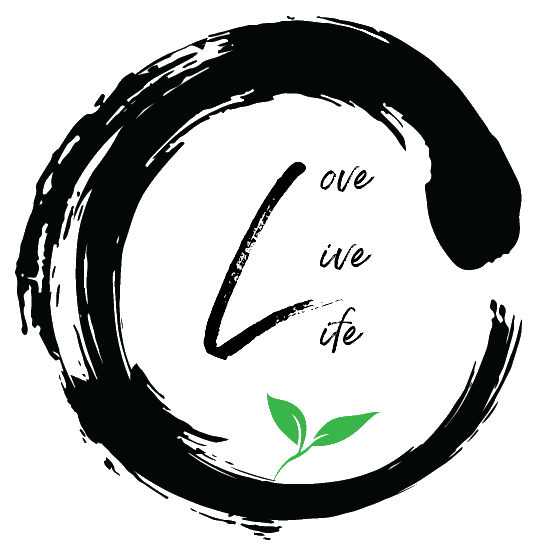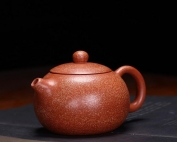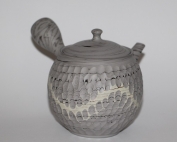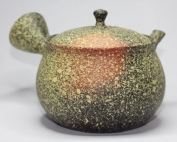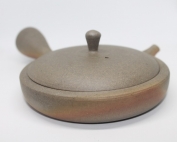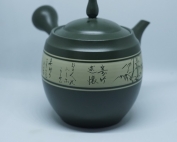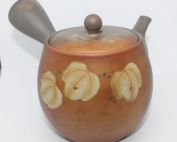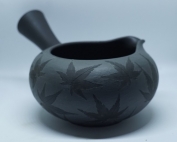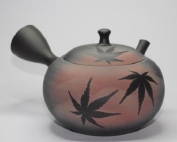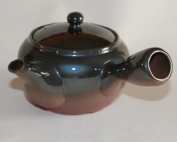Green tea varieties of Japan:
We drink green tea every day, and for us the deciding factor is the good taste of the tea. Of course, we know about the beneficial properties of green tea to health and we are happy for anyone who could help or help those wonderful qualities. However, it remains to be taken into account that accurate statements about the modes of action of the various varieties of Japanese green tea, through new consumer u. Producer wishes were complicated. So there are now breeds for astringency, fragrance, high or low caffeine o. Catechin content, etc.
So it is not surprising that about the catechin content of various plants can vary by 10 times. In addition, since almost every tea is a so-called “blend”, each tea should be analyzed for an exact statement about the content of active ingredients or modes of action. Please always talk to your doctor or alternative practitioner if symptoms persist.
Gyokuro
When green tea began to spread to broader sections of the population in Japan a few centuries ago, a variety of cultivation techniques were devised to perfect its flavor in a variety of variations. So after a while, a green tea was created that today still inspires people all over the world with its light and fresh taste compared to Sencha and its positive effect on health:
Gyokuro (玉露) “Jade Dewdrop”
Shortly after its creation, the Gyokuro was particularly appreciated by the then Japanese society, which is reflected in the meaning of his name (“Noble Dewdrop”, “Jade Drop”, “Jewel Dew”). Even today, he still occupies a special position and is considered one of the finest green teas in Japan. Compared to most other green tea plants, the plants for the Gyrokuro are raised during growth for a relatively long time under intensive shading.
In comparison to the half-shadow tea (Kabusecha, か ぶ せ 茶, “covered tea”), the shading is also comparatively intense, i. relatively little light penetrates to the plants. While the half-shade tea the plants are shaded only about 2 weeks and are exposed to about half to about a quarter of sunlight, the Gyokuro during the shading time only just as much sunlight through to the plants, as this for the ideal variety-specific growth need. With the Gyokuro, intensive shading times of around one month to five weeks are not uncommon.
Gyokuro – green tea harvest
When harvesting the Gyokuro, care is taken to use leaves which have remained relatively tender in their growth, since in these the taste has not yet been adversely affected by bitter ingredients. In addition, in the leaves selected for further processing, experience has shown that many more substances having a positive health effect, such as e.g. contain valuable amino acids, minerals and vitamins.
When making the Gyokuro, the leaves are steamed to make them more durable and to release the flavors for later enjoyment. Traditionally, the tea leaves are then rolled to the typical Gyokuro needles.
Gyokuro – exquisite taste not only for lovers!
 Part of this processing is still done by hand, even though modern, highly developed Japan now has a distinct, sophisticated machinery for harvesting and processing green tea or especially gyokuro.
Part of this processing is still done by hand, even though modern, highly developed Japan now has a distinct, sophisticated machinery for harvesting and processing green tea or especially gyokuro.
Real connoisseurs of Gyokuro, however, appreciate the still partially well-maintained processing by hand. The artisanal, often decades or even centuries passed within a family experience in tea harvesting is not always replaceable by modern technology: The thus obtained Gyokuro tea can excite even experts by his excellence.
The hand-picked and treated with great care leaves so take very little, compared to the mechanical processing, negligible damage to their natural structure. In this way, the natural contents and flavorings inside the leaves remain well protected until the infusion against harmful environmental influences. Thus, the hand-processed Gyokuro can unfold its beneficial effect and full taste.
The typical, dark green needles of the Gyokuro get their full color due to the low incidence of light during plant growth during the shading period. The plants here try to compensate for the low incidence of light by increasing the concentration of chlorophyll responsible for photosynthesis in the leaves.
This ultimately leads to the observed deep green hue. Even after brewing, Gyokuro is characterized by a very intense green compared to many other green teas. The taste of the Gyokuro is distinguished by a fresh, sweet note of many other green tea varieties.
Sencha
The Sencha (煎茶) is green tea, whose cultivation does not shade the leaves during growth. Also due to this compared to other varieties of green tea (such as the shaded varieties Gyokuro and Kabusecha) rather uncomplicated cultivation of the Sencha is in the Japanese area by far the most widely used green tea. Due to the natural sunshine, the Sencha gets its own flavor touch, which distinguishes him from the heavily shaded Matcha.
Among other things, the Sencha typically has a more pronounced aftertaste and a typical extremely refreshing nuance. The Japanese tea farmers in the Sencha distinguish three different harvest periods: the tea picked late in the year is called Sanbancha (三 番 茶, dt “third tea”), the sencha picked in the middle harvest season as Nibancha (二 番 茶, dt “second tea “) and the tea harvested at the beginning of the harvest is called Ichibancha (一番 茶, dt” first tea “).
The numbering of the harvest periods is reflected in the Japanese typeface, ie in the first character. The harvest typically begins in April and ends in August. However, the time and number of harvest periods may vary depending on the growing region and regional tradition.
The tea leaves harvested in the respective periods also differ significantly in their taste characteristics. As a guide here, the taste of Sencha is more intense the later the year it is harvested. The earliest harvest typically contains most of the vitamins and other valuable ingredients that have accumulated in the plants over the cold months, and a very pleasant, fine aroma.
In addition, the Sencha is characterized by a high proportion of amino acids. In contrast to mechanical harvesting, the valuable ingredients remain particularly sustainably preserved during the hand harvest.
Also in the further processing of the Sencha exist various practices. For example, the leaves of some Sencha varieties, like the Gyokuro, are steamed and rolled to prevent premature oxidation and consequent loss of quality. Special varieties of Sencha include, for example, the particularly intensive Fukamushi-Cha.pdf or the Kabuse-Cha or Kabusecha.pdf, which tastes similar to Gyokuro.
The valuable ingredients are retained during this processing method particularly sustainable. In further processing, the Japanese Sencha has in the course of a century-long development of the Chinese Sencha solved: Unlike Chinese Sencha, the Japanese Sencha is not normally roasted during further processing after harvest. In contrast to this, many heat-sensitive natural active ingredients are retained in the tea leaves during pure steaming.
Sencha Preparation
After preparation, the Sencha typically displays a noble, glowing cup color. The temperature of the water used in the brewing has a significant influence on the taste of the finished tea, so that the inclined tea lovers here at given Sencha can experiment with slightly different brewing temperatures in order to discover the ideal for the full aroma unfolding. However, boiling water (100 ° C) is not suitable.
For most Sencha varieties, a gentler brewing temperature of about 50 ° C – 70 ° C is suitable.
Bancha
The Bancha (番 茶) is a green tea that has developed relatively early in the history of Japanese green tea. Only through various improvements of the cultivation and processing process developed from this the Sencha (煎茶).
Other varieties later emerged from the Bancha. Thus, it is in many ways, so to speak, the “grandfather” of modern Japanese green tea. However, there are already a variety of different approaches to bancha production.
Harvest and processing of the bancha
The bancha is later harvested as the sencha from the same green tea plants, so that the leaves have a much different character than the earlier harvest. A distinction is made between the first Bancha, the Nibancha, whose leaves are picked in June, and the second Bancha or Sanbancha, which is harvested in August. Similar to the Sencha, the leaves of the Bancha are treated with steam and rolled.
This serves to protect the tea from oxidation processes. Even though the Bancha was the predominant tea in Japan at the time, this leaf has now turned: Only about 10 percent of the green tea harvested in Japan today is Bancha. Here he was overtaken by his higher-quality relative, the Sencha, which now accounts for the largest share of green tea grown in Japan, meanwhile, significantly. The days when Japanese green tea was predominantly Bancha are over.
Tea culture in Japan
Bancha is drunk in Japan on all sorts of occasions. Unlike the Sencha, which used to enjoy tea ceremonies, it does not have a traditionally elevated cultural significance. However, the importance of bancha as Japanese green tea should by no means be underestimated. Among other things, this is probably due to the low proportion of caffeine, which is regarded by its encouraging effect, such as at bedtime rather than negative. Therefore, the Bancha is administered relatively safely in Japan and children.
The Bancha differs significantly in the taste of Sencha, so that it is not difficult even beginners to distinguish the two varieties. At best, beware of quality questionable Bancha products whose taste and health benefits may often be called into question as well.
Health benefits of the Bancha
From a health point of view, the bancha is primarily suitable for supplying iron and important trace elements. Especially people who are constantly suffering from a lack of iron or a lack of trace elements contained may therefore benefit from regular Bancha enjoyment. In addition, the Bancha, also by its basic action, often help with stomach or digestive problems.
This basic action also makes it an antagonist of many naturally occurring acids in the body. However, unlike high-quality green teas, it does not contain their particularly health-promoting substances. Thus, the Bancha is still a day-to-day tea.
Kukicha & Karigane
Unlike many other teas, the kukicha is green tea, which is obtained from the stems of tea plants. This stem tea is especially popular in Japan and has its own taste, different from other green tea varieties. When processing the high-quality green tea, great importance is attached to preventing the oxidation as much as possible. In this way, the valuable components of the tea plant are spared and remain preserved until the enjoyment. However, the ingredients contained in the Kukicha differ in some cases significantly from those produced from leaves green tea.
As a supplement to the full use of the beneficial potential of the green tea plant, however, the enjoyment of Kukicha is also recommended. The quality of these teas fluctuate greatly, so care should be taken to ensure that not only the remaining stems of the tea plant are carelessly shredded in the production of the Kukicha Stängeltees, but instead the production of the stalk teas is also emphasized on a gentle processing of the plants , this is usually only the case with some higher quality Kukicha teas.
Kukicha & Karigane tasty everyday tea for young and old
A high-quality kukicha is usually very low in caffeine compared to other green teas. The Kukicha or Karigane is used for this reason in part in Japan as part of drinks for children. Like many other green tea varieties, the Kukicha is treated with steam to protect against oxidation. The taste of the tea is characterized by a very rich aroma, which is reminiscent of roasted nuts but also intense umami flavors are widespread.
Depending on the shrub variety, harvest time and shading, the Kukicha has a wide range of flavor nuances. Originally, the tea was just a by-product, with tea farmers processing the remainder of their tea crops, and over time, Japan has developed a rich culture around the kukicha. Among other things, this is probably due to the somewhat unusual for green tea, but nonetheless among many tea lovers very popular taste.
Hojicha
In Japan, the land of the rising sun, tea lovers will find an endless world of diverse green teas, all of which differ in shape, cultivation, production and preparation. Whether it is the popular green teas such as Gyokuro, Matcha, Bancha, Sencha or Hojicha, all are distinguished by significant characteristics.
More than three quarters of the green tea cultivated in the tea gardens of Japan is Sencha: a special green tea with a particularly intense and fresh taste. Sencha is grown on open tea fields that receive full sunlight.
The Hojicha, although not very similar visually, is a green tea and goes back to the production of a Sencha. For the production of a Hojicha often the later harvests of the Sencha are used. Like a Sencha, the leaves are equally and immediately steamed and rolled after the picking, but the Hojicha is then roasted. The roasting process provides the brown color of the tea leaf of a hojicha.
The Hojicha has a very intense and powerful scent that reminds a bit of the smell of coffee. In Japan, it is common to roast its Hojicha itself. With small roasting bowls of clay, the tea can be freshly roasted on an open flame, such as a gas stove, and thus alone ensures a unique preparation experience. Also in terms of taste, a Hojicha differs significantly from its Japanese green tea relatives.
A strong, almost nutty taste, which is more like a black tea, is decisive in the taste. Roasting removes much of the caffeine in tea and Hojicha is considered a very popular thirst quencher in Japan, often drunk chilled as iced tea on hot days. Due to the very low content of caffeine and tannins, it is considered very stomach-friendly and as a drink for children or the elderly.
The Hojicha should be poured with very hot water about 90-95 ° C. High-quality teas allow up to five infusions. In Japan, there is a lot of competition between the producers of Hojichas and 100 grams of tea can cost around 50 €. Prices that are unimaginable in Germany especially for this “kind” of tea. In some German stores Hojicha per 100 grams is already available from about 3 €.
I do not think that these teas are high-quality representatives. Furthermore, I also believe that the process of roasting a Hojicha plays a rather subordinate role. If you roast a bad sencha you will not get a good hojicha!
Here is the true:
“From a lame Duck makes you no racehorse”!
This is also evident on the Blattgut, less good Hojichas are very similar to the leaf of a Bancha and the higher the Hojicha, the finer is its Blattgut. And the finer the leaves the finer the taste! The selection of the suitable Sencha is therefore a basic requirement for the production of a good Hojicha followed by skillful hands and fine grasp of the roaster “hojiru”!
